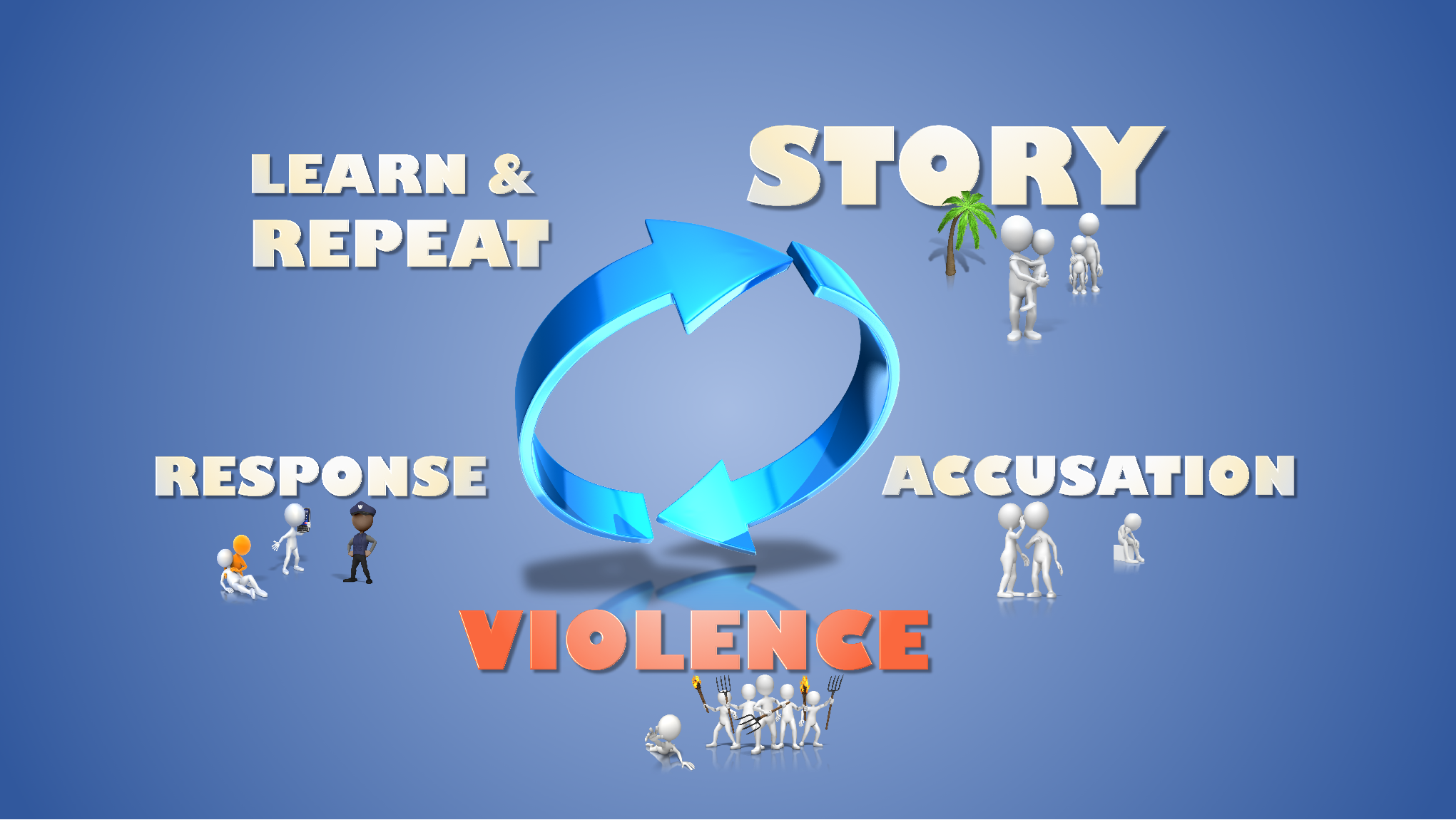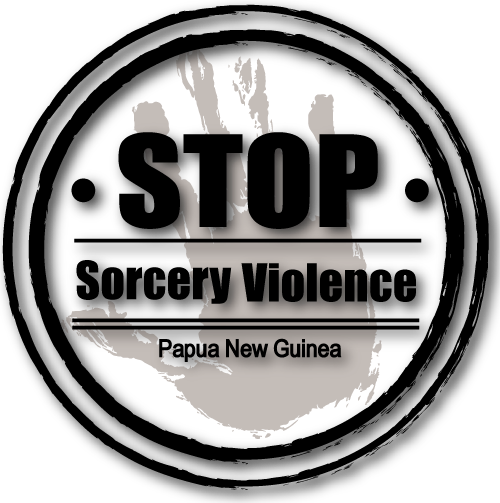The Cycle of Violence

by Anton Lutz
We need to understand Sorcery Accusation Related Violence (SARV) as a Cycle of Violence caused by dangerous beliefs.
Let’s start here. People tell stories about why bad things happen. When we believe these stories, they become the way we see the world, our worldview, the way that things make sense to us.
But sometimes these stories make us think there is a PERSON who is responsible for bad things that happen. We use words like “black magic” and “sorcery.”
In this environment of fear and suspicion, we might blame or even accuse that person.
This is how the cycle of violence begins.
Understanding the cycle
Step one, we hear and believe a STORY that tells us “bad things happen because of dangerous people who do sorcery and witchcraft.” We believe these sanguma stories. We tell these stories to our children. Next thing. Mipla olgeta, mipla bilipim tasol.
Step two, when something bad happens, we look for someone to blame. We ACCUSE someone in our community. Maybe we try to get them to reverse the sorcery, to put the life back, to stop causing problems.
Step three, when talking is not enough, we turn to VIOLENCE. We publicly blame them, attack them, threaten them, torture or even murder them.
Step four, when human rights defenders, or government authorities, the police, or church leaders come to RESPOND, to try to assist the victim or to try to restore gutpela sindaun in the community, most of the time it is very challenging because the community is upset.
Some people are happy that a sanguma man or meri was attacked. Some people know that what has happened is wrong, but they are afraid to talk about it because the perpetrators are part of the same community.
People who are educated too often keep quiet, and the young men who carried out the attack like to make everyone think they are some kind of heroes. It is very difficult to respond well in this environment of fear and uncertainty.
Step five, the young people watch this happen again and again in their communities, on social media, in the newspapers.
Young people see that church and community leaders give confusing messages and talk about how sanguma might actually be a “real and spiritual thing.”
Young people see that Highlanders love to deal with so-called “sorcery” accusations using violence, and that coastal and island communities – which have different magical beliefs – are now starting to use more and more violence as well.
Young people see that the government does not have a strong unified message or a plan of action to empower the change that is needed to end SARV.
And so the cycle continues, and each time it is worse. The stories we believe lead us to suspicion and accusation. The fear and accusation leads to stigma and violence. The violence leads to more problems.
My friends. For the sake of our beloved nation, we must break this cycle. We cannot believe these stories. We cannot continue this violence.
Breaking the cycle
Now that we have learned about the cycle of violence, from Believing Stories, to Accusation, to Violence, to Response, to Learn and Repeat, we can think about what it will take to break the cycle.
Let’s think critically about the stories we’re telling and believing. Are they really true?
What if young people became critical thinkers who were able to reject false stories when they heard them? What if mothers and fathers did not teach their children to be afraid of ghosts and witches?
Is it really true that ol sanguma wok lo kaikaim lewa blo ol man? What if people understood and believed medical explanations for sickness and death? What if teachers and health workers used their training to educate Papua New Guineans about the biological processes – not the sanguma processes?
Is it really true that Satan uses sanguma to hurt or kill sinners? That’s not a Christian belief! What if pastors taught the truth – that there is no reason to fear, because Jesus Christ is more powerful than Satan, evil spirits and even so-called sorcerers? This is what Christians teach and believe.
Do you see? Knowing and believing the truth will protect us from dangerous false beliefs.
When it comes to Accusation and Violence, what if community leaders did their part by protecting people who were blamed instead of joining in to attack them?
What if the youth refused to attack the person who was accused? Would that break the cycle of violence?
What if the police arrested people who broke the law?
What if judges and magistrates sent murderers to prison?
What if, what if, instead of waiting for our leaders to show us the way forward to a future that is free of these dangerous beliefs and this curse of violence, what if we woke up, and took charge of our own destiny as a nation, and did what we could, where we are, with what we have:
to speak and believe what is true,
to protect one another,
to make a difference?
My question to each of you is:
What are YOU doing now to end this terrible cycle of violence?
